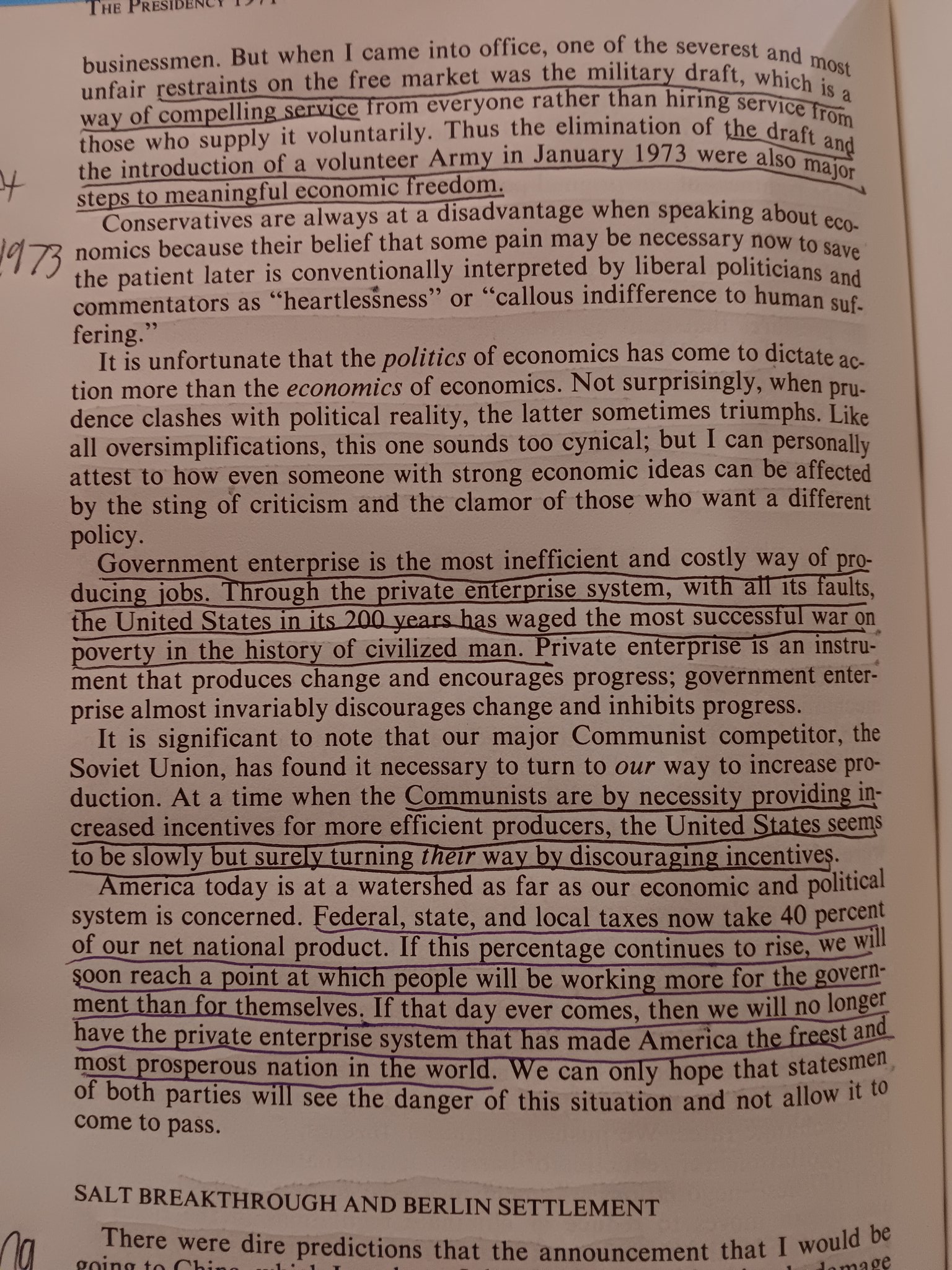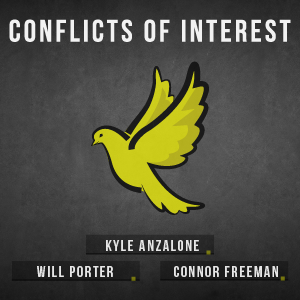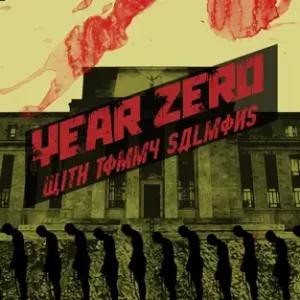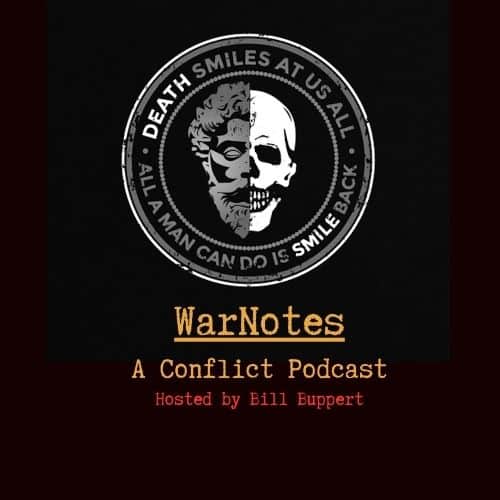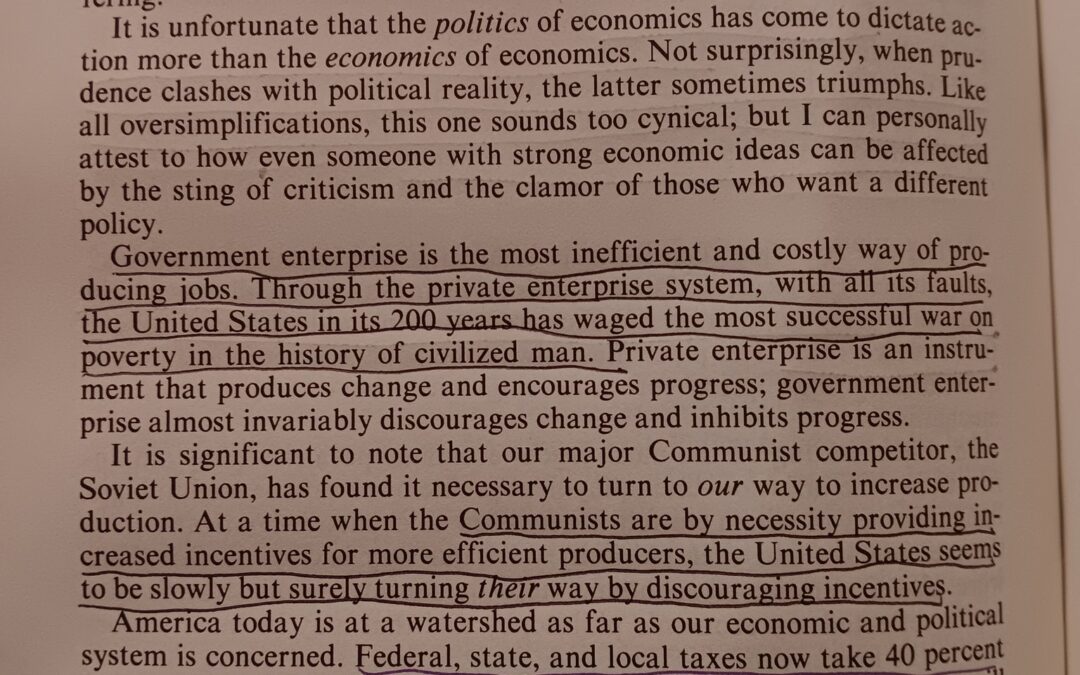
Blog

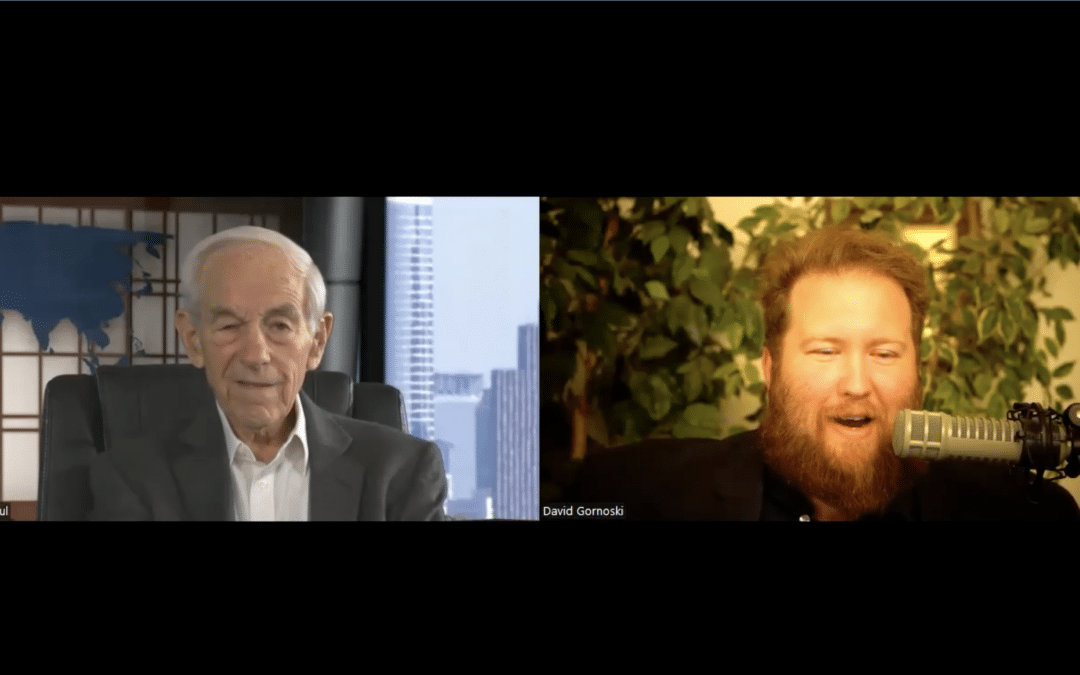
Ron Paul and Elon Musk Alliance?
Ron Paul shares his thoughts on the election with David Gornoski.
I loved the part around 7min and 33sec where Paul discusses the implications of JD Vance coming around to seeing the Central Bank as the enemy of mankind as it is.
Watch here: https://x.com/DavidGornoski/status/1852058831674839188
Timestamps
0:00 Introduction
2:31 This election is unlike the ones before
3:18 Elon’s plan to cut government spending
5:48 Staying positive
7:33 JD Vance on Ron Paul’s economics
8:11 Would Ron Paul advise Elon?
9:18 Ray Peat, RFK Jr, and government food regulations
13:29 Preparing for the coming economic crash
19:43 Class conflict
21:13 The spiritual, natural law
22:58 Closing thoughts
The Dems Are What They Claim to Hate
As I said in 2016 (or was it 2015?), I despise Trump and I despise most of the people who despise Trump. I will never forgive the Democrats for making it necessary for me to defend him against their lies.
Fat Amy Follies: Part XXIV
The grift that keeps on giving and the poor performance across the board of the aircraft and the sticker shock of the high price for that mediocrity. I am going to say out loud: stealth is over-rated, the ea of manned combat aircraft is coming to a close and this particular air-frame is not aging well.
Two Trillion Debt Bucks.
The F-35 Lightning II Joint Strike Fighter is the Department of Defense’s most ambitious weapons program and plays a crucial role in DOD’s ability to meet current and future U.S. national security goals. At the same time, the F-35 has been plagued by mounting costs and delays resulting in what some have called a staggering price tag of more than $2 trillion over several decades.
In March, the fighter jet marked an important milestone — “full-rate production,” generally the point when development reaches an acceptable level of performance and reliability to start building more of them, faster. F-35s have already been in production at or near full rate for several years. At the same time, the military services that fly the F-35 (the Air Force, Marines, and Navy) plan to use it less.
That full rate production comes after fifteen years since it entered service in the USAF. No one has been held accountable and no one has been fired.
Projected costs for sustaining the F-35s have continued to rise from $1.1 trillion in 2018 to $1.58 trillion 5 years later (a 44% increase). This increase is in part due to the extension of the service life of the aircraft from 2077 in 2018 to 2088 in 2023.
Like the US Navy Little Crappy Ships (another trillion dollar investment in future fish apartments), these outrageously ludicrous projections of F35s being in service in the last half of he 21st century is silliness of biblical proportions.
Planning to fly the F-35 less. Over the course of the last couple of years, the Air Force and Navy have also reduced their projected annual flying times by 19% and 45% respectively. In part because of this reduction in flying, the services are now projecting they will meet most of their affordability targets. Affordability targets are the amount of money they project they can afford to spend per aircraft per year for operating the aircraft.
Fly the garbage aircraft less to increase its lifespan? Great idea. If they left it on the tarmac like the B1B “Bone” bomber, it will last longer and the decision may be wise due its lack of delivery on real world combat/performance expectations.
Is national bankruptcy the sole solution to stop the malpractice and fiscal bleeding? Stay tuned.
Read the full GAO report.
https://www.gao.gov/blog/f-35-will-now-exceed-2-trillion-military-plans-fly-it-less
Email me at cgpodcast@pm.me

The Girl in the Mall
She could be anywhere from sixteen to her early twenties, a strewn mess of hair rests tangled above and over her face. A regular at the Seaford Shopping Centre, she watches families walk by, smiling at children and when no one is nearby she talks to herself. In the winter her bare feet purple from the cold and as summer approaches her skin showing bruises, cuts and debris that clings to her youth.
Pacman, the man mountain who works security tells me that she is nice, keeps to herself and the mall management and local shop owners don’t mind her being inside. Though it’s not the weather that she seeks refuge from. In such a public place she can hide in plain sight, barely social she is not alone as strangers and those regular go about their business. She is safe inside the shopping centre.
Roxy who works at the local Ecumenical centre told me that she has clothes and shoes often given to her, though she seems to throw the footwear away. The girls mother is somewhat in the picture but the daughter refuses to go home or stay with her so instead she roams the streets, sleeping between bins and living inside the mall.
A few months ago I spent a night with local homeless men after talking with a man who lives in a tent across from where I live. He is a man down on his luck, the working poor who is lost between the welfare dependency and real estate entitlement of Australian culture. His name Kyle, he will be alright in time. The other men who I spent a night with, were not battlers or noble poor. They boasted of predatory pasts and instincts to do it again, the streets to them was not a place that capitalism or what ever other scapegoats one can monetise forced them to, but rather they sought it because it meant vice and no responsibility reigned. One of them told me I was the idiot because I had to go to work as the sun rose for the morning while they lay in the miasma of chemistry.
Maybe he was correct.
She is not like them. There is an innocent in her situation. A rightful unwillingness to trust, perhaps especially those who say, “I want to help.”
Her knuckles scrapped red, as she beats them against her head while no one is looking. She whispers things to herself, in between smiles. One time she watched me as I walked in her direction, then said fast words at me. Another time I handed her fruit and a protein shake, she opened a wallet to show me that she had cash. Alongside a notebook of scribbles, a broken necklace and a couple of half eaten chocolate bars. A couple of weeks ago I saw her walk in front of incoming traffic outside the gym I was heading to train at, no one aggressively reacting instead each driver slowed with concern. She seemed oblivious to the risk, or maybe welcoming the potential harm that a car at speed could bring.
I will write about Kyle and the gaggle of homeless men another time. Their stories are not so sad, not as noble as many passerby’s would like to imagine. One of the men boasted about masturbating while he stood outside a school, how he loved the time he was a Santa Claus who sat in a mall, aroused by the children squirming on his lap while parents fed him their innocence so that they could take a photo in a ritual so sacred that it’s not strange. His vile words spat his boasts to me with putrid confidence, even as I threatened him physical harm he continued with a tirade of predatory babble. I suspect his boasts were all made up, his attempt at humour or to get a reaction from me. I saw him some weeks later, outside a supermarket, strangers giving him money and handing him food. They felt sorry for him. I don’t think that I do.
Earlier this year a tall man in a blanket, long dirty hair wafting his secretions to all nearby came by my mobile comic books shop. He seemed harmless enough until he pulled at a young girls hair, tugging hard. She yelled at him, he looked at her with stunned indignation. I shooed him away, making sure he understood what his fate would be if he returned. He scurried to the bushes in the distance. A woman yelled at me, “leave him alone, he’s homeless. He’s unwell, it’s not his fault.”
The little girl whose hair he yanked, she but a prop. “It’s not his fault…”Right. Perhaps it was the little girls.
It is my own biased perspective, a pollution of chivalry and masculine honour that sees such men as threats rather than instant victims because of their addictions, values, mental status and income. And I see the girl in the mall as an innocent who has likely endured, suffered, and is close to so many families, homes or what many consider normality. They walk by her every day. She is in a purgatory, trapped in her own mind, shackled by past abuse and now as her youth wanders by as quickly as those strangers in the mall, her deterioration and escaping something, or others may someday no longer be possible.
It’s not a material or a spiritual crisis, just a human one. The problem was human beings, the solution is also human beings. Given how she responds to passing men, or when I offered her food. I suspect that it may need to be from a woman or girl of an emphatic and patient nature who can reach her.
I just wanted to write this and share it because we live in a world where many exist in our peripheries. Not all are as obviously in need of humanity as the girl in the mall, but they may be the mechanic who today told me about his custody battle with his wife, close to tears as he shared his frustration but above all how much he misses his son. Or the old lady who I spoke to the other week at the beach, it was the anniversary of her husbands death, four years. She talked to me, a complete stranger, about him so that in some way he could live on through her words and into my mind.
There is more to living that making a living. Sometimes the living is in knowing the world close to home, for the girl in the mall I imagine life to her is living day by day. Maybe her joy is in the scribble she puts into her notebook and watching, smiling and even laughing not at but with the kids that pass her by. A family walking by that she never had. Or maybe the Seaford Shopping Centre has adopted her as much as she has it, and for now it’s all the family she needs.

Halloween Election
Halloween is upon us again and it happens to be before the next Most important election in history. The sacred ritual of the democracy ghouls, when the imperial citizens of the United States vote for their executive, though other candidates exist it is relegated to two lesser evils, depending on your perspectives. Around Halloween people love evil things but during the election season, evil is a thing of romantic lusts.
Far away in the miserable wastes of war shivers a family, one in too many, hungry and frightened each night and day as death lurks nearby they hope for a reprieve. Killers in government uniforms or those with aspirations to be such, prey and rule with violence, many of the weapons and ammunition used to kill, the proudly stamped MADE IN THE USA. Or perhaps a terrorist did something to upset Uncle Sam so that family now must suffer the wrath of the American people, drones, Tomahawks or boots on the ground trampling them to death. That family and the many others have no representation, they are meaningless. Just human beings without a magical passport, forfeit because of where they were born.
That family like many others can be burned alive, crushed, shot, raped, tortured, starved, drowned, turned to dust. Their pain and intimate moments of terror don’t matter. “It happens” we are assured, part of the witches brew that is foreign policy. Happens to them. Despite the heraldry of progressive thinking or the faith of conservative belief, there is a segregation on this planet. A racism, a supremacy, they are not Gods children, but sub-humans. They do not belong inside the borders or part of the exclusive groups, they were born over their in the frontiers of empire, in the buffer zones of violence. At best they are statistics, collateral, the forgotten.
To paraphrase the film, A Time to Kill, imagine that family. See them. Think about them. But now imagine that they are Americans. Or even Australian, French or English. Whatever helps you to relate. Do they matter now? Imagine they were New Yorkers on that sacred September morning in 2001, are they significant then?
Do they even know it’s Christmas? Would you? Heal the world, make it a better place…for who? You? The rabid mob of voters?
Back to the candidates in waiting.
Donald Trump seems to appeal to many with calloused hands, a lot of men who spend their days working, building, keeping the world going through hard work. He is relatable, as much as a billionaire can be. He comes across as a man who talks to his chauffeur, hangs with professional fighters and listens to them, the kind of man who would want to go spend a day in a McDonald’s to work because he likes the food. For all his talk of swamp draining, he certainly helped to fill it but he mentioned the swamp and to many people, not just Americans the “swamp” is a concern. But Trump just seems to want to be the most famous person in the world.
To those who scream through the Facebook or exist in the bubble of androgynous offices these are things that don’t matter. On construction sites, as I dig trenches alongside migrants and old bigots, shake hands with delivery drivers from all over the world and share sweat on the mats with prize fighters, I notice most of them have a nuanced understanding of the world than those who remain cocooned inside the air conditioned bubbles of funding and bureaucratic importance. To them Donald Trump passes the beer test. Just like a Bob Hawke once could, he is flawed but funny and says things that at times relates or just upsets those who they hate most.
For those who don’t know the people in the periphery, they are struggling. The harder they work the more they are punished. Regulations, nanny state, surveillance, censorship, prohibitions, taxation these are things that those dirty calloused hand people who you may only come across when you need your tyres changed or to keep your toilet flushing care about. Trump blusters his way into their hearts with words that seem sincere, to them that is seductive. Whether he does any of those things, is unlikely but at least he acknowledges those sorts of things.
His candidate opponents, not just Kamala but Biden, Clinton and even those he defeated way back in the Republican primaries may as well be the reptiles of Ickean fantasies. They are flab suits that live the life of insincere politics. Handlers and teleprompters feeding them lines just to thank a stranger for holding the door open for them. Assuming they even notice such a person at all. But the mob seems to adore politicians. They become an effigy to blame and hate whenever government betrays, fails or simply does what it does.
The politician is replaceable, they are part of the micro percent of government that does change around election time while the vast majority remain the same. They exist and do regardless of who the mob elects to blame. The elected may profit with status, glory, ego and materialistically but they never really change government that much. Rebels don’t seek politics, they don’t ascend the ranks of the state, revolutionaries may over throw regimes so that they become the tyrants but not rebels. Politics rewards failure and morally weak human beings. Though most people claim to know this, so they vote anyhow.
While Kamala stumbles each and every answer, even soft ball questions like, “how are you?” The most honest answer she ever gave was, “I’m not his daughter.” Trump talks with a sincerity that only a man with tremendous ego and self belief could, while she is insulated by the establishment of American politics. She was a cop after all. Trump is protected by the cult of his fans, but above all his own hubris. Kamala encapsulates the privilege of tenacious failure while Trump the privilege of good luck and maybe charm.
Everybody Knows that the dice are loaded, everybody rolls with their fingers crossed. Everybody knows the war is over, everybody knows the good guys lost.
That’s how it goes. But everybody knows. Whether they pretend to or not, maybe they care or they don’t but everybody seems to know. So now elections are to be based on a candidate not being the other person, spite voting and hate guides the ballot. Or as some claim they vote defensively. They vote to stave off government for those extra few inches of freedom, voting for the candidate that doesn’t seem to want to squeeze them to death. Or, in this modern liberal democracy of welfare and government corporate employment, they vote for whoever bribes the best and ‘gives’ them ‘free’ stuff. It is all rather perverse. The black magic of Halloween.
Come around all interested, a warlock and witch, both will be granted super magic powers once they endure the ritualistic cycle, the election process. Then, they have the powers of democracy. They have the legal power to assassinate, execute, blow up cities, starve populations, kill, murder, kill, murder, kill…kill…..the mob gave them this power. The many councils of wizards and alchemists will steer their decisions but these two are the future figures, of the United States and because we live in a monopolar world, for all of us. In Australia the US election is realistically more important than anything local especially in the instances of foreign policy, the nonce’s that the Aussie mob clamours for all agree in most key areas, more government, support the American emprie.
Dutton or Albanese, both are boring and unimaginative men who would be avoided at a social gathering if it was not for their narcissistic laziness at persisting with politics and in their government careers, they would not be exceptional. Only over time through hanging around like a terrible smell, people soon accept and even become fond of out of nostalgia for do such stinking men, to some they seem charming. In the end, they both agree on most things. Little changes outside of the facades and frequency of funding. But above all else, they ensure that Australia remains obedient. Pine Gap, AUKUS. whatever war comes next they will pledge the Diggers and the land mass of the continent at the service of Uncle Sam. The Aussie mob loves them for it so long as they are gorged on real estate and welfare and currency debasement. So Aussies pay attention, they like Trump or hate him because he is Trump and they like Kamala or hate her because she isn’t Trump.
One old timer I was labouring with summed it up this way, “Trump seems less likely to drag us into another American war. He seems like he would rather do business than war.” That is how the US is summed up, by war. It’s obsession with mass murder and imperial exceptionalism. A candidates singular perk is that they are less likely to start a new war. And this is so very normal that it’s said with a straight face.
George Foreman once said of Razor Ruddock before his loss to Lennox Lewis, that we should be careful of a fighter who is revered by his losses. Ruddock had lost twice to Mike Tyson, both entertaining fights. When it comes to political candidates we should be wary of one who runs by not being the other person. But I am not political, merely an atheist who watches on and tries to understand the religions of others. This violent, repulsive and deadly religion of government, especially the sect of liberal democracy is quite perverse and would be comical if not for the fact that we are all forced to suffer it and must obey the violent zealots and their paid goons who enforce it.
This Halloween think about the ghouls, witches and wizards. Those who dance before you and pretend to be like you. To relate to you. But don’t see them as monsters, they are very much human beings. That’s precisely the point. They are just human beings. Not gods, not saints, not demons. Just human beings. Maybe the monster is in the mirror, along with the many other irresponsible and unaccountable members of the mob who claim to be powerless but only ever march to towards power, one bribe and threat at a time. It is Halloween after all, have fun. That family, they die all the same. So nothing changes for them much in the end. And dear American friends, that truly is exceptional to the bitter end.

Interview: The Fed, the Medical Cartel, and US Complicity in Genocide
I joined Keith Knight on his podcast Don’t Tread on Anyone to discuss how the Federal Reserve system robs Americans, how the government serves the pharmaceutical industry at the expense of public health, and how Israel is perpetrating a US-backed genocide in Gaza.
Keith is the Managing Editor at the Libertarian Institute, where I have since March had the honor of being a Research Fellow. We started out on the economic discussion, then switched topics to the government-enforced medical cartel at 27:49, and finally we discussed the Israel-Palestine conflict at 1:20:50.
read more…

